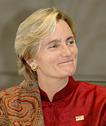Critics of microfinance have knocked down an army of straw men in recent years, and 2011 was no different. But it’s high time for microfinance practitioners to stop being defensive. We know enough about the perils and potentials of poverty-focused microfinance to address the real needs of the poor.
Early champions, including Sir Fazle Hasan Abed of BRAC, Mohammad Yunus of Grameen and Ela Bhatt of India’s Self-Employed Women’s Association, recognized that financial services alone would not be sufficient to break the bonds of poverty. Critics of microfinance became more shrill in 2011, but as a recent article in The New Republic points out, “the growing backlash is in danger of overcorrecting.”
Going into 2012, the microfinance field faces three key challenges:
Serving the ultra-poor. We’ve seen that in poor countries, those at the bottom 10 percent of the economic pyramid too often remain impervious to microfinance-based solutions. With pilots in eight countries worldwide, CGAP and Ford Foundation are now adapting and testing “graduation programs,” a holistic and rigorous approach to helping the ultra-poor get on a pathway out of poverty. Based on BRAC initiatives launched in Bangladesh in the 1990s, the programs involve asset transfers, consumption stipends, savings, social support, financial education and coaching to bolster self-confidence. BRAC research showed that 80 percent of the ultra-poor “graduate” and stay out of extreme poverty five years after these programs ends. The majority then take advantage of micro-finance.
Advancing “microfinance multiplied.” Major philanthropies have already caught on to the BRAC approach of “microfinance multiplied,” which amplifies the impact of microfinance services by using networks of self-employed entrepreneurs to provide additional livelihood development services to the poor. The MasterCard Foundation, for example, is expanding BRAC’s programs in Uganda, with interventions across livelihood and education value chains. (See our chapter on “Using Microfinance Plus Agricultural Services to Improve Rural Livelihoods and Food Security,” in New Pathways out of Poverty.) The partnership is well on track to reach 4.2 million people, or 12 percent of the country’s population, by 2016.
Using technology appropriately. In a world enamored of technology, it’s often the low-cost, low-tech solutions that have proven the most viable. But mobile solutions have finally arrived in microfinance and will see increased emphasis in 2012. This year saw the launch of bKash Limited, a subsidiary of BRAC Bank, allowing easier reach of financial services to those previously deemed “unbankable,” including the poorest and most vulnerable members of society.
As Yale economist Dean Karlan points out, microfinance still offers “a range of valuable economic tools,” but the key is to focus on the actual needs of the poor: not just loans, but real opportunities to lift themselves out of poverty.
Susan Davis is President and CEO of BRAC USA. FAI invited Ms. Davis and others to offer her insights and reflections on the important events, opportunities and challenges facing microfinance this past year. This post is the first in an ongoing series featuring guest bloggers including Elisabeth Rhyne and Mary Ellen Iskenderian on "The Year in Microfinance." These contributions will be posted weekly on the FAI site into the New Year. FAI also invites you to participate by telling us your own thoughts and opinions about the year in microfinance via comments.




